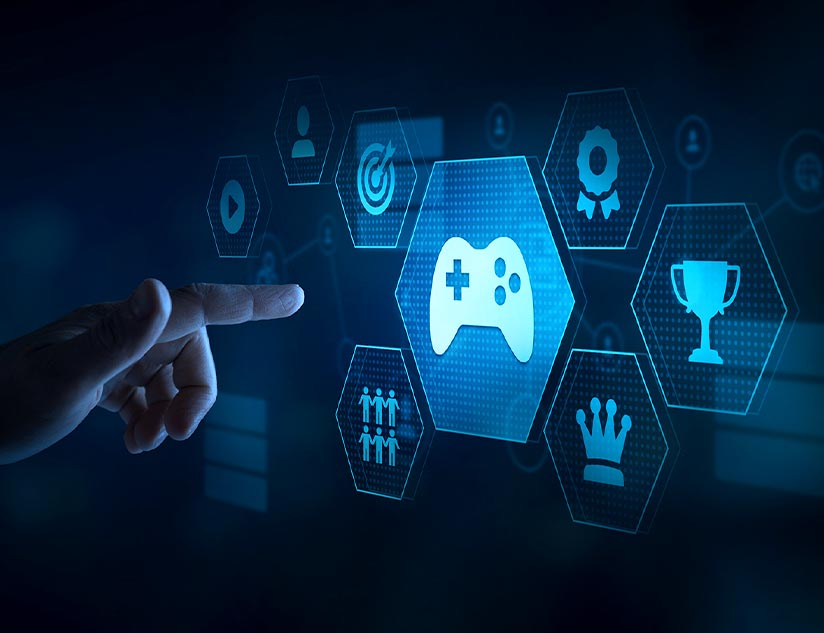Role of Gamification in Transforming e-Learning
April 2nd, 2018
Gamification is the application of game-design elements with rewards such as points, badges, leaderboards, and storyline to educational concepts for improved user engagement.
Since gamification has seen huge success in the general marketplace, redefining expectations in the learning sphere, it is important for us to consider this emerging technology’s impact on education. With EdTech becoming a reality day-by-day, the K-12 education sector has adopted gamification, wherein gamified learning environments are created to enhance learner engagement and improve learning outcomes. Thus, gamification today is not just a fad, but a new way of learning that is poised to have a great impact on the way we teach and learn. Researchers are looking into new tools and techniques to improve the quality of learning using gamification. Read about: What is Gamification and how is it defined in eLearning
How has gamification changed the way students learn?
The ubiquity of information communication technology and the education sector’s heavy reliance is leading to change the way learning and interaction take place. In gamification, an important consideration is for the structure and game dynamics to have a relevant relationship with the content. The breadth of research identifies the numerous benefits gamification brings to the table – enhanced learning, student engagement – to become an approach that is relevant to today’s learner:
- Interactive way to learn: Engagement and interaction levels increase for students when they learn through gamification techniques. A good gamification strategy with a high level of engagement is bound to increase recall and retention. Learners actively engage in the academic content and develop a positive attitude towards learning, which ultimately leads to increased student learning productivity. MagicBoxTM allows content creators to design interesting games that deliver even the blandest of academic concepts in a fun way, thereby increasing interaction in classroom learning.
- Increased motivation to learn: Young learners, in general, are interested in games, with the motivation to play and win. This interest can be harnessed to develop a positive attitude towards learning while playing a fun game. Making mistakes is important for intellectual growth and games allow students to learn from their mistakes. In a gaming environment, the learner is constantly challenged to grow and adapt to the game. The decision of taking a risk in a virtual setting helps control the downside of intellectual risk-taking for learners. Since gamification provides learners with the freedom to fail, they are motivated to try until they succeed. Thus, gamification can play an important role when we incorporate it into the learning process by enhancing student engagement and learning. The overall effect, therefore, is improved learning outcomes with increased student motivation levels.
- More receptive to learning: Gamification in e-Learning produces an effective, informal learning environment, wherein learners can understand real-life situations and challenges in a safe environment. Their reception of the subject matter increases when they enjoy playing an interesting game revolving around it. Educators can leverage gamification to teach complex topics, leading to a more engaged learning experience and enhanced knowledge retention. MagicBoxTM allows for greater reception in students through its gamification offerings, using which, instructors can turn complex academic concepts to interesting simulations.
- Increased participation: In e-Learning, learners have no option but to participate in the game-based learning modules. Games allow learners to take on new identities and roles, asking them to make in-game decisions from new vantage points. They also adopt other roles that allow them to explore new sides of themselves in a safe space. Therefore, there is dedicated participation throughout a game-based module, allowing learners to closely interact with the subject matter.
- Longevity in learning: Gamification improves overall learning outcomes and learning effectiveness. It not only engages students but also gives rise to learning conditions that build understanding through immediate and instructive feedback loops, which also bring about longevity in student learning and understanding of academic concepts.
- Immediate feedback leading to a sense of accomplishment: Once learners complete a game-based learning module, they feel a sense of accomplishment. This is often achieved through the use of certain elements that are associated with the idea of accomplishment, such as points, levels, badges, leaderboards, etc. Instant feedback helps learners understand what they know or should know leading to better engagement and enhanced retention. The frequency, intensity, and immediacy of feedback are important elements to consider for improved learner engagement. The more frequent and immediate the feedback is, the greater the learning effectiveness and engagement. Clear and immediate feedback is important to attain engagement and immersion in a module or concept. MagicBoxTM incorporates several game-design elements to keep learners motivated throughout the module.
The future of gamification
The use of gamification in education is bringing it one step closer to the future. When educators include gaming concepts and game-based principles in their instruction — online, blended, face-to-face — they experience improved learner attitude and motivation. The ultimate aim of gamification in e-Learning is to create something that captures learner attention, challenges them, and engages & entertains them while teaching.
Researchers are also now exploring the impact of gamification on lifelong skills in adult learning. There is a need to explore the use of gamification not only in the education domain but also at the workplace vocational training and industry fields.
To know more about MagicBoxTM and the various game design elements it incorporates to improve learner participation and engagement, contact us here.









